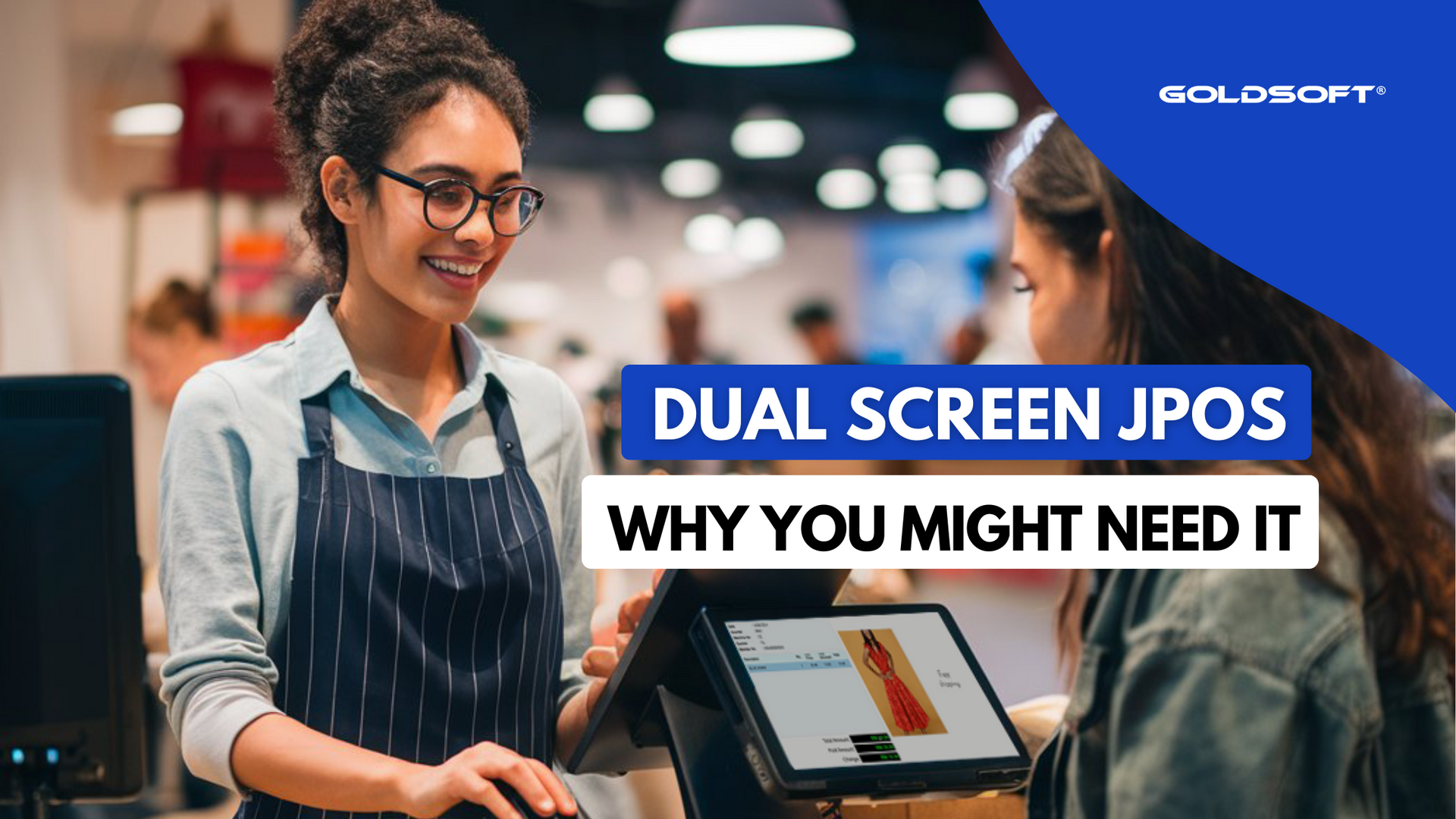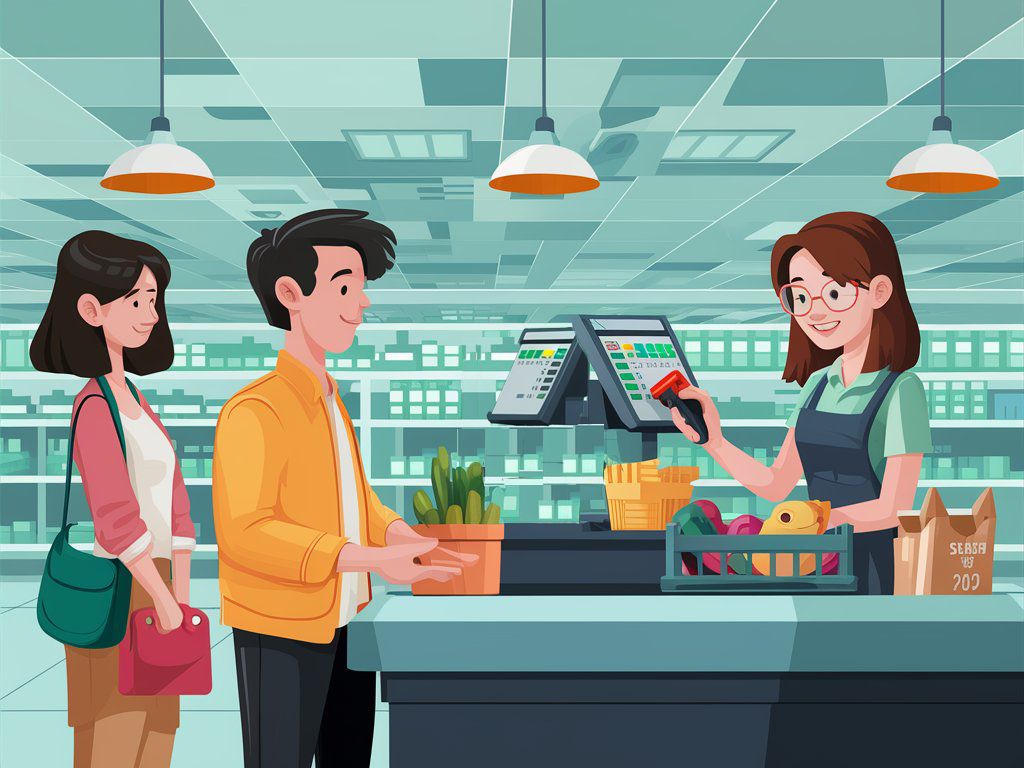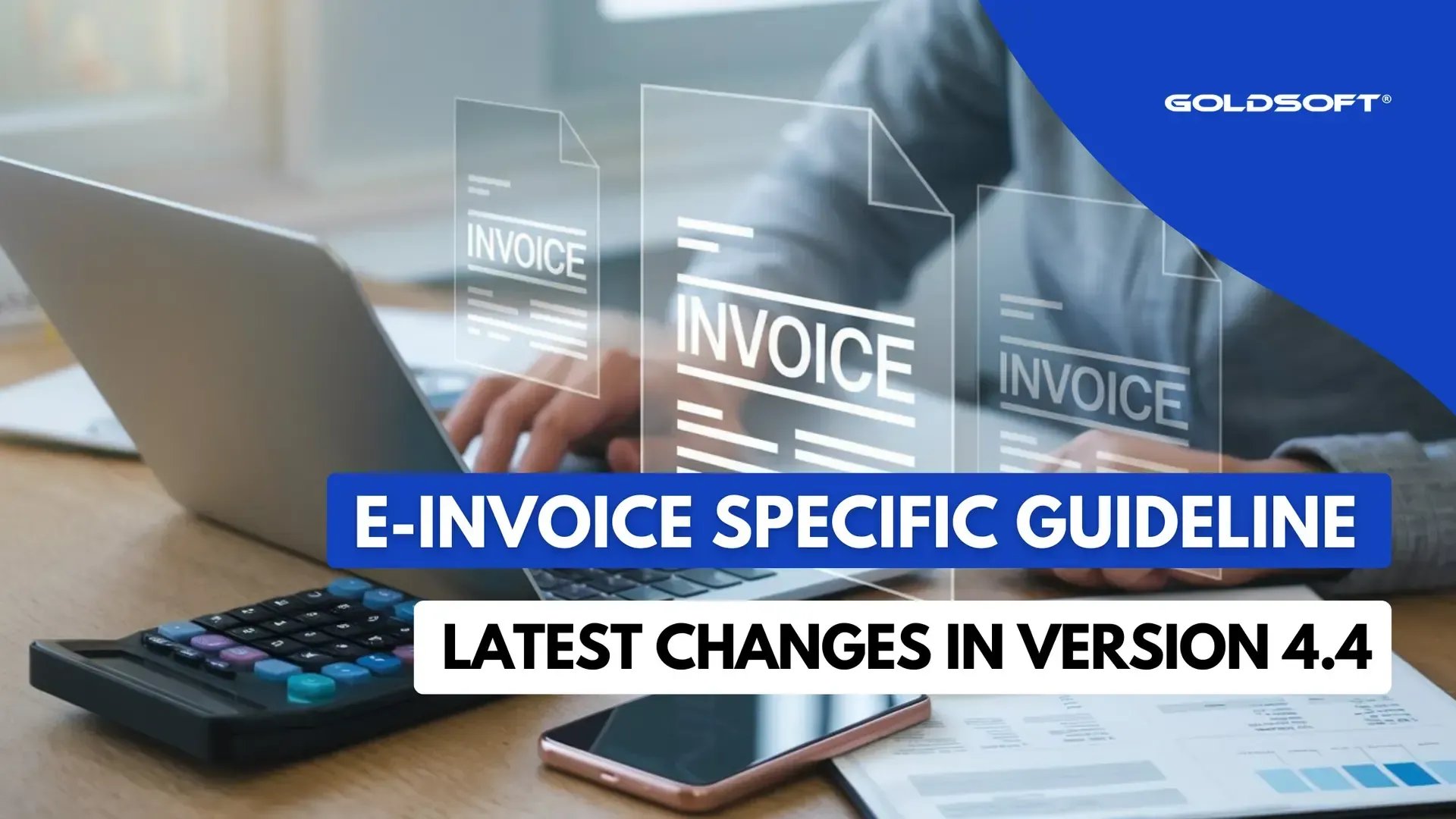What is Dual Screen JPOS & Why Your Business Might Need It
A better way for retailers to use POS system

Introduction
In 1879, the first point of sale (POS) system was created, called a cash register. It was a simple device that could register the amount of each cash transaction to prevent employee theft. Fast forward to today, POS system has become a critical component of modern retail operations. It is no longer just a cash register, but a powerful tool that not only facilitates transactions, but also enhances customer loyalty, streamlines operations and provides valuable insights into consumer behavior.
Today, shopping has evolved far beyond the simple act of purchasing goods, and the focus is on the customer experience in terms of convenience, speed, personalization and engagement. As business continues to evolve, the importance of an advanced POS system is growing, pushing businesses to meet the demands of today's tech-savvy customers and stay ahead in a competitive market. Even the slightest inconvenience can drastically affect customer experience and retention. So, you may be wondering what the most common issues are that customers and staff are currently facing.
Common Problems

1. Lengthy checkout process
One of the most common problems is that customers spend far too long in line due to the slow checkout process. There are many factors caused by traditional POS systems, such as the need for verbal communication to explain transaction details or disputes due to errors. These problems are often seen in large retail stores and supermarkets during peak hours when checkout lanes are full of people. This can be frustrating for customers and lead to lost sales as impatient shoppers abandon their purchases or decide never to shop there again.
2. Missed upsell opportunities
Every business aims to maximize profit from its customers. To achieve this, businesses try different ways to upsell in the hope that customers will spend more money on their product or service. Traditional point-of-sale systems focus only on the transactional aspect of the sale and cashier is require to upsell through verbal communication which they don’t often do. Without a customer-facing display, the chance to highlight new products, special offers, or promotions are easily missed during checking out when customers are most likely to look or wait for total purchase information.
3. Customer Distrust and Transaction Disputes
In a retail environment, customer trust is essential, but it can be easily compromised by a lack of transparency during transactions. Traditional POS system only provides information to the cashier, which often leave customers feeling uncertain about the accuracy of their charges, leading to potential disputes and dissatisfaction. Errors, whether due to incorrect item scanning, pricing discrepancies, or misunderstandings about discounts, can quickly escalate into confrontations that tarnish the shopping experience and damage the retailer's reputation.
4. Lack of Customer Engagement
Customer engagement is a critical factor in building loyalty and improving the shopping experience, but the traditional POS systems do little to encourage interaction at the point of sale. Customers are typically left idle while waiting for their transaction to be processed, missing a prime opportunity for meaningful engagement such as seasonal promotions, product marketing, or exclusive offers.
How Dual Screen JPOS Solve This
1. Reduce Queuing Time
A dual-screen JPOS system significantly alleviates these problems by streamlining the checkout experience for both the cashier and the customer. The cashier can focus on scanning items, while the customer-facing screen displays itemized lists in real-time, reducing the need for explanations and confirmations. Customers can instantly verify their purchases and complete payments with greater autonomy which leads to reduced transaction times. This efficiency speeds up the flow of traffic and enhances overall customer satisfaction.
2. Increased Sales Opportunities
POS systems can now serve as a tool for upselling opportunities thanks to the dual screen capability. The customer-facing screen can dynamically showcase ongoing store promotions or seasonal promotions, effectively capturing the customer’s attention at the point of decision. Customers can now easily access to information on deals they might be interested in, which encourages additional purchases and increases the average transaction value. Dual Screen JPOS can turn a checkout process into a powerful marketing tool that drives revenue growth and boosts customer satisfaction.
3. Better Transparency
The Dual Screen POS can now present a clear, real-time display of transaction details directly shown to the customer which significantly reduces transaction errors. As each item is scanned, the customer-facing screen shows the product name, price, applied discounts, and the total amount, giving customers confidence in the accuracy of their transaction. This transparency reduces the likelihood of disputes, builds trust, and promotes a positive shopping experience, ultimately increasing customer loyalty and satisfaction.
4. Enhanced Customer Engagement
Now Dual Screen JPOS can transform this waiting period into a valuable moment to connect with customers. By utilizing the customer-facing screen, retailers can display various content in image or video format, such as ongoing promotions, new products announcement, or exclusive offers. Customers can now engage with these contents instead of waiting idly. This creates a more engaging checkout experience and increases active brand interactions that drive customer satisfaction and potentially foster long-term loyalty.
How Dual Screen JPOS Works

Dual Screen JPOS can be used in various retail industries such as grocery, apparel, retails, etc. Imagine a busy supermarket on a weekend afternoon, filled with customers navigating through aisles with shopping carts brimming with groceries. At the checkout counter, a dual-screen POS system can prove to extremely useful in this situation. As the cashier scans each item, the customer-facing screen displays a detailed list of products, their prices, and any discounts that are being applied. This transparency reassures customers that they are being charged correctly, reducing potential disputes and speeding up the transaction.
Meanwhile, the customer-facing screen can also promote related products or services, such as ongoing seasonal promotions or new products. This creates opportunities for upselling while keeping customers engaged during the checkout process. The dual-screen system not only shortens queue times but also potentially drives additional sales, providing a seamless shopping experience that builds customer loyalty.
Conclusion
The dual-screen JPOS system represents a significant step forward in retail technology. It enhances the customer experience, streamlines operations, and provides retailers with the tools they need to succeed in a competitive market. As retail continues to evolve, those who embrace this innovative solution will find themselves at the forefront of the industry, equipped to meet the demands of today’s increasing customers.
Upgrade your retail POS operation with Goldsoft today with our dual-screen support for JPOS system by contact us at 03-2732 8833 or fill up the form below for enquiry.
Contact Us
Share
Recent Articles





